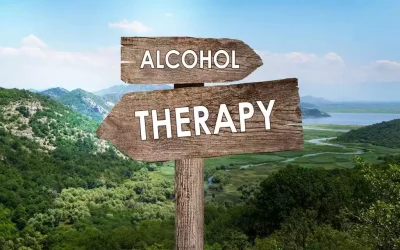Marty Mann founded the National Council on Alcoholism and Drug Dependence (NCADD). She was one of the early members of Alcoholics Anonymous and the first woman to have successfully gone through a 12-step group. She founded NCADD to help people like her get counseled and treated medications for alcohol use disorders for alcoholism and dedicated this group to key medical and scientific research for the community. By raising awareness about alcohol misuse and abuse, communities, organizations, and health professionals can take action to prevent it, both at home and in the community.
April is Alcohol Awareness Month
Alcohol Awareness Month provides a focused opportunity across America to increase awareness and understanding of alcoholism, its causes, effective treatment and recovery. It is an opportunity to decrease stigma and misunderstandings in order to dismantle the barriers to treatment and recovery, and thus, make seeking help more readily available to those who suffer from this disease. Alcohol Awareness Month is held every April to help spread awareness about the dangers of alcohol and the causes of and treatments for alcohol use disorder. The National Council on Alcoholism and Drug Dependence (NCADD) sponsors Alcohol Awareness Month, which has been observed since 1987. NCADD estimates that almost 20 million individuals and family members are living life in long-term recovery! We are all different, with varied backgrounds and life experiences, but we are all addicts, alcoholics and family members living in recovery.
Your Employee Assistance Program is Here to Support
- NIAAA has some interactive resources to help you examine your drinking patterns further and, if needed, recognize and search for quality care.
- Recognizing that you want to change your relationship with alcohol is a big step, and it can be overwhelming to think about the next steps, such as treatment.
- If one finds themselves unable to reduce alcohol intake, exceeding intended consumption, experiencing withdrawal symptoms, or experiencing issues with personal and professional life due to alcohol use; they may be experiencing alcohol use disorder.
- Marty Mann founded the National Council on Alcoholism and Drug Dependence (NCADD).
If not for those second thoughts, substance use would have been 40% higher among the teens in the study, researchers said. The assumption up to now has been that monitoring works because parents are more likely to catch kids red-handed and inflict some sort of punishment like grounding them or taking away their smartphones, Pelham said. What’s more, teens don’t need to be busted physical signs and other symptoms of alcoholism and alcohol abuse at least once by their parents to get on the straight and narrow, results show. The manufacture, sale, and consumption of alcohol is banned under U.S. law. You will be subject to the destination website’s privacy policy when you follow the link. Click here to learn more about going to rehab for alcohol use or the difference between inpatient and outpatient programs.
Our Services
Discover the impact alcohol has on children living with a parent or caregiver with alcohol use disorder. Find out how many people have alcohol use disorder in the United States across age groups and demographics. Parents who closely monitor their teens might be able to keep them from using alcohol or drugs without actually having to catch and punish them. Previous studies have found that teens are less likely to use drugs, alcohol or tobacco if they have parents who remain aware of their activities, know their friends, and know their whereabouts when they aren’t home, researchers said. Teenagers are less likely to drink, smoke or use drugs when parents keep tabs on their activities, according to findings published in the Journal of Studies on Alcohol and Drugs.
The D.A.R.E (Drug Abuse Resistance Education) and Know Your Limits campaigns have also instilled much-needed information about the harmful effects of alcohol consumption in children from an early age. Most of us are familiar with the link between some lifestyle behaviors and cancer—like smoking or physical inactivity. But some people may be surprised that alcohol consumption is also a risk factor for cancer, and that these lifestyle factors combined contribute to as much as 40% of cancers. Given that half of U.S. adults drink alcohol, it’s important to understand how alcohol use increases the risk of cancer.
TUESDAY, May 7, 2024 (HealthDay News) — Parents can be very effective buzzkills for their teens, just by letting kids know they’re being closely watched, a new study reports. We keep track of fun holidays and special moments on the cultural calendar — giving you exciting activities, deals, local events, brand promotions, and other exciting ways to celebrate. Alcohol can affect the normal functions of the cells in your body, causing them to grow out of control into a cancer tumor. Drinking alcohol raises your risk of getting at least six different types of cancer—mouth and throat, voice box (larynx), esophagus, colon and rectum, liver, and breast in women. As I discussed in my previous blog post, NIAAA also has an important new website that can help you navigate the often complicated process of choosing treatment for alcohol problems.
It was dark and lonely the night I called my future wife, and broke down crying. I was unexpectedly drunk, needing a ride, and finally wanting to talk to a therapist. Through years of working on my mental health I realized I felt I was failing people, tying all the way back to childhood. Learn more about the financial impact of alcohol misuse in the United States.
Although consuming even one drink a day increases your cancer risk, binge drinking is particularly risky. Binge drinking is consuming four drinks or more for women and five drinks or more for men on a single occasion. One in six U.S. adults binge drinks about four times a month, consuming about seven drinks per binge. Binge drinking puts people at risk for many short- and long-term outcomes in addition to cancer, such as injuries, violence, and stroke. Over the past 20 years, prevention efforts have made steady progress in reducing alcohol misuse among youth and young adults due to comprehensive evidence-based approaches by communities, states, and federal partners.
Even teens who would not normally be tempted to drink alcohol may be drawn in by certain social situations, so don’t assume they have all the facts they need to resist peer pressure. Parents and trusted adults can play a meaningful role in shaping youth’s attitudes toward drinking. Sponsored by the National Council on Alcoholism and Drug Dependence (NCADD), Alcohol Awareness Month encourages community organizations to host events that increase public awareness and educate people about the treatment and prevention of alcoholism. With this and other National Health Observance toolkits offered on healthfinder.gov, we’ve made it easier for you to make a difference. The toolkits provide resources for organizations like schools, health care practices, and health departments to raise awareness about critical public health issues, like the health risks of drinking too much alcohol. Alcohol use disorder is when regular or heavy drinking creates a change in one’s brain chemistry leading to increased tolerance which can develop into alcohol addiction.
April is Alcohol Awareness Month, a time to raise awareness and understanding of alcohol abuse. Over time, excessive alcohol consumption can lead to the development of chronic diseases and other serious issues that affect your quality of life, physical and mental health. The Council leverages traditional and social media campaigns during April to draw attention to the causes of alcoholism and the risks of alcohol dependence, and encourages people to talk about this disease. It aims to foster responsible attitudes by designating a month of candid discussions and information sharing, while reaching out to the American public via community-sponsored awareness activities and campaigns designed to prevent alcoholism. In addition, for adults, the Rethinking Drinking website features interactive calculators as well as tips and strategies to cut down or quit drinking.
These efforts aim to generate and disseminate fundamental knowledge about the adverse effects of alcohol on health and well-being. Such research is critical in helping us to improve the diagnosis, prevention, and treatment of alcohol-related problems. As a subsidiary of American Addiction Centers, a nationwide provider of treatment facilities, Alcohol.org will also be showcasing the cost alcoholism and addiction can have on your life throughout the entire month of April. We’ll be helping give a real glimpse into how it can affect your mental and physical health, financial well-being, relationships (family and friends), and what it could mean for your current and future career. This month Gratitude Lodge encourages readers to learn the signs and symptoms of alcohol use disorder to prevent or treat addiction before it’s too late.
Let NCADD help you find care in your community, learn more about important health issues, and make informed health-care choices. As a boy I sat on my grandpa’s work shoes watching game shows as he snuck me sips of beer. Over the years various family and friends emerged as alcoholics — sometimes facing job loss or jail, sometimes concealing the turmoil.
There are also more than 200 diseases and injury-related conditions that are caused by alcohol misuse. Bringing awareness to alcohol use disorder can prevent death and allow people to live a life free of addiction. Provides a toolkit for spreading the word about strategies for preventing alcohol misuse or abuse and encouraging communities, families, and individuals to get involved in a beginners guide to doing drugs for the first time.
Each month we highlight National Health Observances (NHOs) that align with our mission to improve health in the United States. In April, we’re raising awareness about minority health, alcohol awareness, and celebrating public health. A social movement to brand alcohol consumption as a public health concern begins. If you recognize any of these symptoms in yourself, it’s time to rethink the role that alcohol plays in your life. NIAAA has some interactive resources to help you examine your drinking patterns further and, if needed, recognize and search for quality care. This year, the National Institute on Drug Abuse (NIDA) and the National Institute on Alcohol Abuse and Alcoholism (NIAAA) will be hosting the 10th annual National Drug and Alcohol Facts Week (NDAFW) from March 30 through April 5, 2020.
But these days I believe whoever it is, we must take a sober look to help them identify their deeper issue, if we want a healthy pastime. Explore how many people ages 18 to 25 engage in alcohol misuse in the United States and the impact it has. Learn how many people ages 12 to 20 engage in underage alcohol misuse in the United States and the impact it has. Simple awareness that parents are monitoring their behavior wound up cutting teens’ use of alcohol or drugs by 40%, without any actual punishment being doled out, researchers found. Your Component Employee Assistance Program (EAP) is a great place to start if you are concerned about your drinking habits or the drinking habits of someone you care about.…




